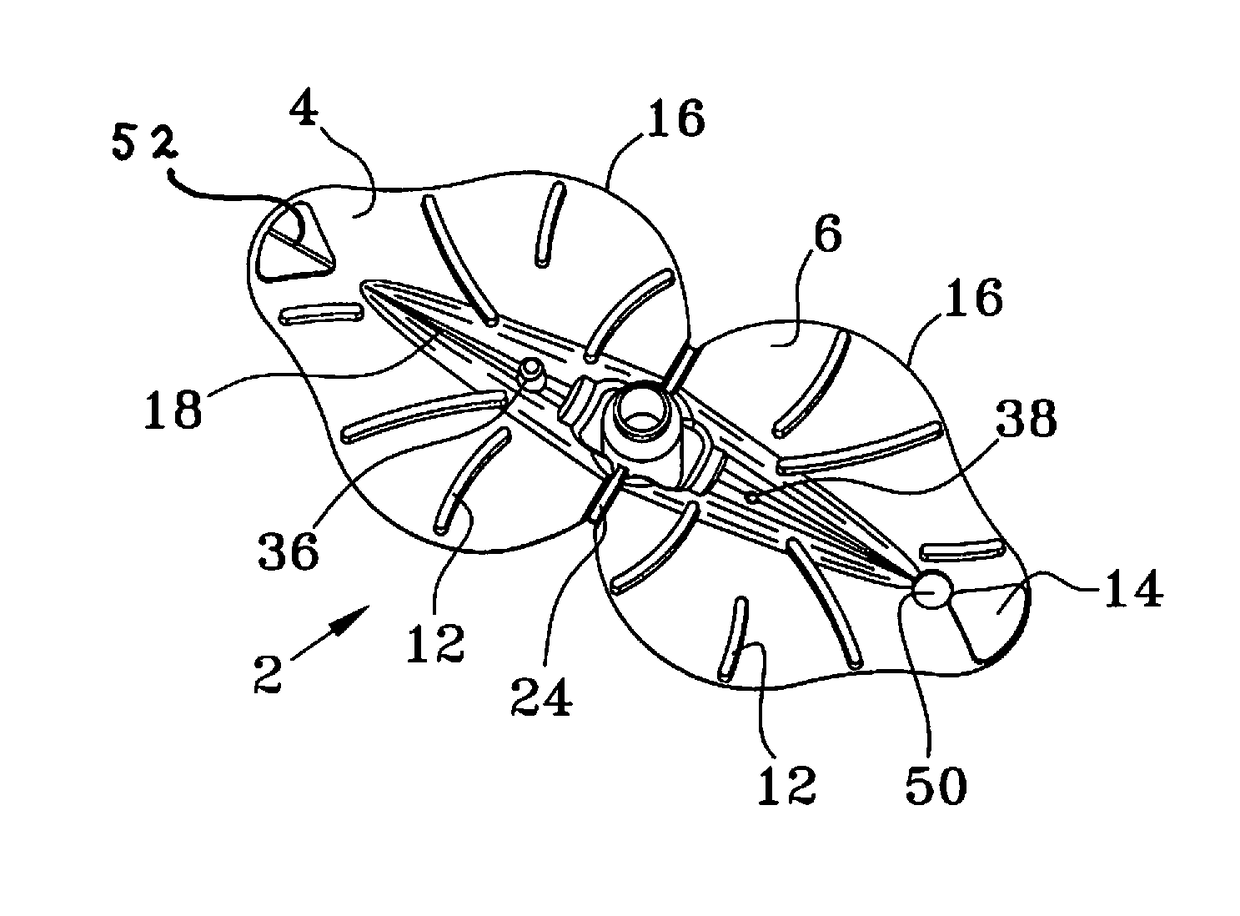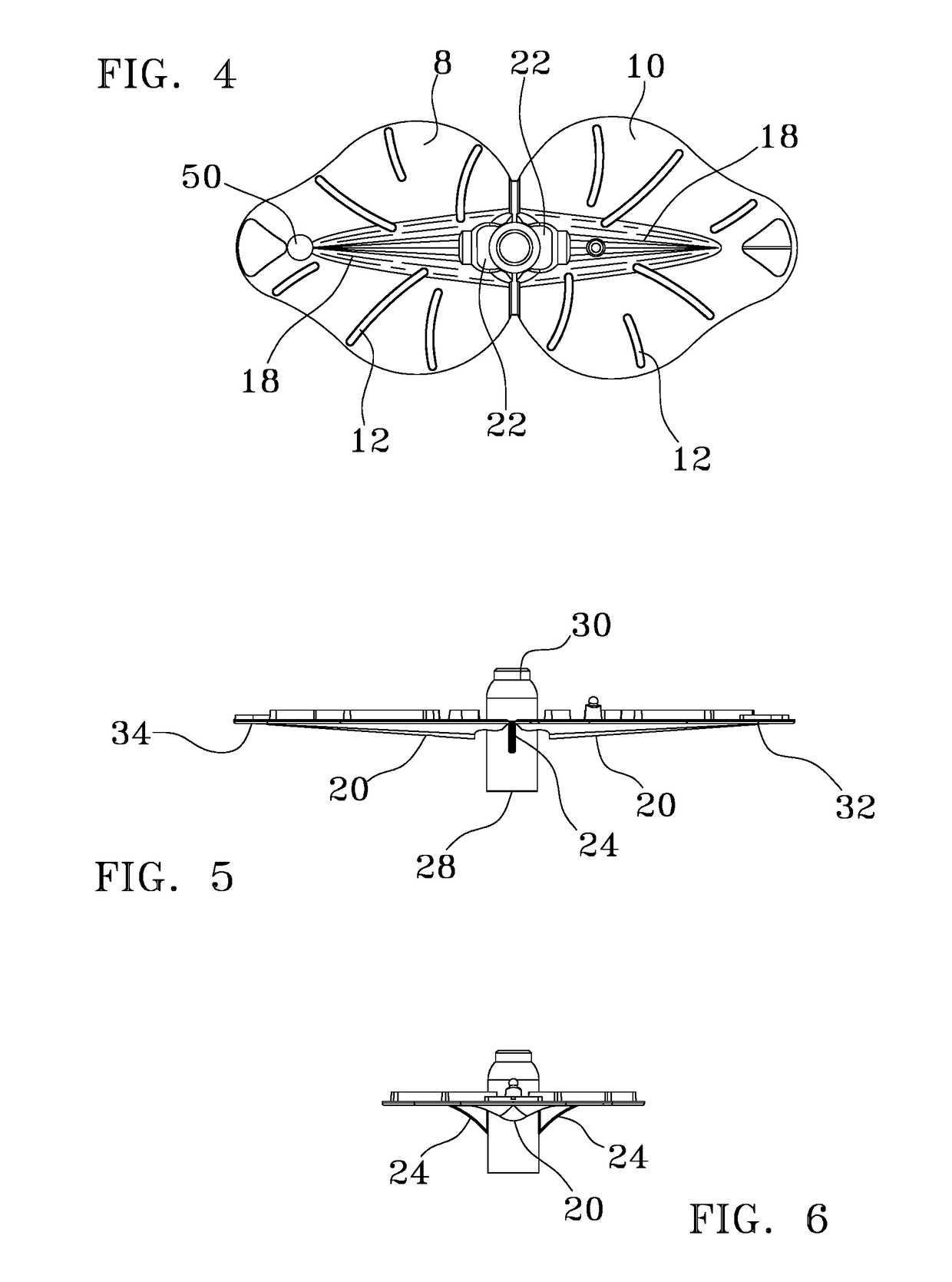Oral Cavity Suction Device
a suction device and oral cavity technology, applied in the field of oral cavity suction devices, can solve the problems of reducing the patient's comfort and discomfort, and useless ejectors, and achieve the effects of less if any attention, effective, gentler and comfortable saliva ejectors, and reducing patient's natural gag reflex
- Summary
- Abstract
- Description
- Claims
- Application Information
AI Technical Summary
Benefits of technology
Problems solved by technology
Method used
Image
Examples
Embodiment Construction
[0021]Looking at FIG. 1 it can be seen that the saliva ejector 2 is a pair of substantially similar leaf shaped (ovate) plates with their proximal ends hingedly connected together into a mirror image configuration with a short tube extending normally above and below the plates from a cutout region at the center of the ejector's axial centerline, where the two plates are conjoined. However, upon closer examination it can be seen that this device is much more structurally complex as will be discussed herein.
[0022]There is a unique geometry to the saliva ejector 2, which can generally be described as ovate (i.e., having a wider base than apex and referred to herein also as a leaf shape), such that each plate has two distinct regions, its body 1, and its front lobe 3 (FIG. 8). Combined, these regions are referred to as leaf shaped plates. Each plate is a flexible, generally planar member that is constructed from a medical grade polymer of uniform thickness.
[0023]The saliva ejector 2 is ...
PUM
 Login to View More
Login to View More Abstract
Description
Claims
Application Information
 Login to View More
Login to View More - R&D
- Intellectual Property
- Life Sciences
- Materials
- Tech Scout
- Unparalleled Data Quality
- Higher Quality Content
- 60% Fewer Hallucinations
Browse by: Latest US Patents, China's latest patents, Technical Efficacy Thesaurus, Application Domain, Technology Topic, Popular Technical Reports.
© 2025 PatSnap. All rights reserved.Legal|Privacy policy|Modern Slavery Act Transparency Statement|Sitemap|About US| Contact US: help@patsnap.com



